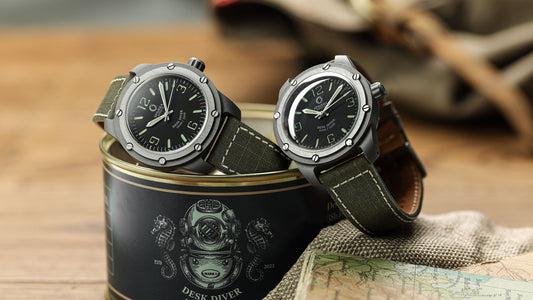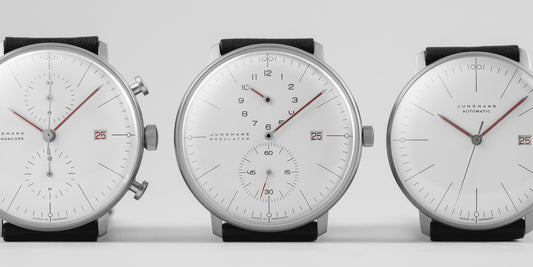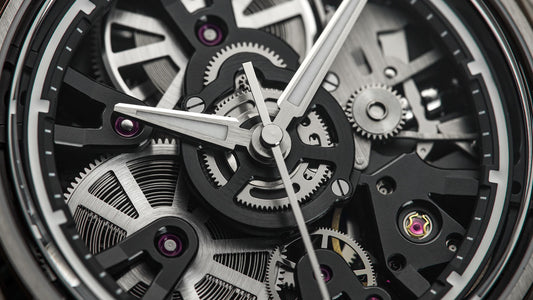My fascination with this delta-winged Cold War jet began as a toddler around Cuban Missile Crisis time. Read on for my Vulcan bomber story and introduction...
The Avro Vulcan bomber has fascinated me as long as I can recall. In fact, I can remember exactly where that enduring image of a small delta-shape crossing summer skies to the rumbling ‘Vulcan howl’ of its mighty turbojets began. It comes from the skies over Bristol, England, in the early 1960s. I’d have been about three and playing in the garden of our suburban semi. Thinking back, maybe that image sparked my interest in aviation…

Vulcan Bomber MOD - Image Credit: RAF/MOD / OGL v1.0
I was born in 1959, in the last weeks of a decade that saw Britain develop its first nuclear deterrent force. The V-Force that carried Britain’s atomic weapons consisted of three futuristically-shaped jets. There was the Vickers Valiant, the Handley Page Victor and, the most distinctive and technically advanced, the Avro Vulcan designed by Lancaster bomber designer Roy Chadwick and A. V. Roe’s Stuart Davies.
Vulcan Bomber: Cold War child
When I first saw Vulcans, the Cold War’s geopolitical tensions were nearing their lowest point with 1962’s Cuban Missile Crisis. And there I was, looking up at the most distinctive of the new shapes marking Britain’s Jet Age. I remember it like yesterday.
The Avro Vulcan – from 1963, the Hawker Siddeley Vulcan – first flew in 1952. Various excellent books tell its story. They include Tim Laming’s The Vulcan Story 1952–2002, Haynes’ well-reviewed Avro Vulcan 1952 Onwards (B2 Model) Owner’s Workshop Manual or any of Vulcan pilot Tony Blackman’s books, such as Vulcan Test Pilot and The Vulcan Boys.

Vulcan Bomber - Image Credit: clipperarctic / CC BY-SA
For Vulcan newbies, here’s the potted ‘tin triangle’ story. This iconic aircraft is a tailless, four-turbojet, delta-wing strategic bomber designed for high-altitude flight. Later, after Gary Powers’ U-2 was shot down, its role evolved for the revised hi-lo-hi mission profile required to evade Soviet Union defences. That’s when camouflaged upper surfaces replaced the original white anti-flash paint that got Vulcans jokingly called the ‘Detergent Force’.
From nuclear deterrent to Falklands War
During life as Britain’s pre-Polaris nuclear deterrent, each Vulcan would have delivered a nuclear weapon. Alternatively, Vulcan bomb bays could house 21 conventional 1000-pound bombs. Famously, along with AGM-45A Shrike anti-radiation missiles, these featured in the epic Black Buck sorties to Port Stanley during the Falklands War – the only time Vulcans bombed in anger. For more on this, read Rowland White’s superb Vulcan 607 – then visit XM607 at RAF Waddington.

Avro Vulcan Bomber - Image Credit: Tony Harrison from Farnborough, UK / CC BY-SA
Vulcan XH558
The RAF operated Vulcans from 1956 to 1984. Later, Vulcan B2 XH558 was privately owned, most recently by the Vulcan to the Sky Trust who flew it until its grounding in 2015. XH558, now G-VLCN, was unusual for serving in strategic bombing, Vulcan in-flight refuelling and maritime reconnaissance roles. Before retirement from military service, it also headed-up the RAF’s Vulcan Display Flight.
XH558/G-VLCN, later named The Spirit of Britain, is now based at Doncaster Sheffield Airport (formerly Robin Hood Airport Doncaster Sheffield) where it's the taxiable star of the visitor centre. Two other taxiable Vulcans (XL426 and XM655) reside at London Southend and Wellesbourne Mountford airfields.
Vulcans at BAC Filton
As mentioned earlier, my experience of the Vulcan began when they regularly visited RAF Filton airfield. At the time, Filton was a designated V-bomber dispersal airfield. However, contrary to popular belief, and despite Vulcans being put on five-minute readiness at one point, V-bomber dispersal wasn’t ordered during the Cuban crisis.
Nearly 40 years later, employed as a technical author and copywriter in Bristol, I worked with RAF and Rolls-Royce veterans who’d flown in, and supported, Vulcans and their Olympus engines.
In particular, I recall one colleague’s description of the December day that an engine shaft failed on XA894 at Filton. At the time, the aircraft was testbed for the Olympus 320 engine destined for the ill-fated TSR2 project. When a turbine disk flew off, it severed the airframe and set the Vulcan ablaze before coming to rest a mile down the runway. The Vulcan was destroyed in a conflagration that also consumed British Aircraft Corporation’s new fire engine…
The Olympus turbojet
This wasn’t the only time Vulcans served as engine testbeds. The V-bomber played a key role in developing the RB199 Tornado engine as well as the Rolls-Royce/Snecma Olympus 593 for Concorde – another now-departed aviation icon.
During its life, several Olympus engine versions powered Vulcans. Originally the Bristol BE10 Olympus, it was the world’s first twin-spool axial-flow turbojet with turbine-driven high- and low-pressure compressors on a shared co-axial shaft. The 60,000 lb thrust from its four engines was crucial to Vulcan’s superb high-altitude capability and 16,000 fpm climb rate.

Rolls-Royce Bristol Olympus engine at the Bristol Industrial Museum - Image Credit: Arpingstone
Passion for the ‘flying flatiron’
Something that always struck me when talking with people who’d worked around Vulcans was their unbridled passion for the ‘flying flatiron’. From early test flights by pinstripe-suited Roly Falk, to its last landing, the Vulcan’s power, manoeuvrability and presence was adored by aircraft crews and public alike. Even though later displays were more restrained than Falk’s famously breathtaking climbing barrel rolls, the Vulcan’s awesome performance remained apparent all its life. What other 1950s-era aircraft could outmanoeuvre Soviet interceptors at altitude, then hug the ground under enemy radar before delivering Britain’s nuclear weapons? The Vulcan was very special…
Radical change
Nowadays, such ability is commonplace. But this was an aircraft that entered service barely a decade after World War 2. The Vulcan represented a radical change from anything before. At the time, its performance and capability, compared to other aircraft, was jaw-dropping. No wonder that, as the Jet Age began, its delta wing profile was as imposing as today’s most innovative aircraft – maybe more so. Nowadays, history shows us the iterative 70-year evolution of modern jets. But back in the 1950s there were no precedents to compare. The Vulcan’s bomber predecessor was the Avro Lancaster! To schoolboys staring into 1950s skies, the Vulcan really was the stuff of Dan Dare, Pilot of the Future.
Such is the Vulcan’s following that, even during XH558’s last flight, her presence still turned heads – even among those who weren’t born when she entered service in 1960. The Avro Vulcan, epitomised by XH558 and a few other surviving Vulcans, remains legendary in a way matched by only a handful of aircraft such as the Spitfire and Lancaster. Looking back, it’s ironic that, though Vulcan flies no more, the Lancaster, with its evocative Merlin-engine soundtrack, still graces our skies.

Lancaster Aircraft - Image Credit: The National Archives UK
An unforgettable aircraft
To see or hear a Vulcan is unforgettable. Whether from inside Airbus offices at Bristol Filton, or at home, as I discovered when XH588 overflew Cheltenham in 2015, Vulcan’s distinctive ‘Olympus howl’ drags you compellingly from whatever you’re doing.
While XH588 still displayed for the Vulcan to the Sky Trust the jet’s magical airborne presence endured. Alas, with increasing airframe hours and dwindling resources, support eventually ended. On 28 October 2015, The Spirit of Britain entered ground retirement at Doncaster Sheffield Airport, South Yorkshire – formerly RAF Finningley, once the operational conversion unit (OCU) for Vulcans.
Where to see a Vulcan
Will this venerable icon of Britain’s post-war skies fly again? Sadly, it’s unlikely. But at least XH588 should remain – first among equals – as one of 19 surviving Vulcans. Of these only XH588, XL426 and XM655 can still be taxied. You can find a list of locations for surviving Vulcans here. Four are in North America; the others are in the UK, at locations as diverse as London’s RAF Museum and East Lothian’s National Museum of Flight.
Through complete aircraft, and partial exhibits such as XM569’s cockpit at Gloucestershire’s Jet Age Museum, Vulcan’s legend lives on. Though it’s unlikely that a Vulcan will fly again, a rich body of resources complements the aircraft. This includes museum exhibits, books, DVDs and YouTube videos. Start with Guy Martin: Last Flight of the Vulcan Bomber, V-Force: Battle for the Skies, and 617: The Last Days of the Vulcan Squadron – yes, the ‘Dambusters’ squadron flew Vulcans from 1960 to 1981.
Furthermore, when TV documentaries such as Jet! When Britain Ruled the Skies revisit the golden age of post-war aviation, breaking the sound barrier and classic pilot watches like Breitling’s Navitimer Ref. 806, they often feature aircraft such as the Vulcan.

Breitling Navitimer Ref 806 - Image Credit: WatchGecko Online Magazine
The James Bond Vulcan
As a British 1960s icon, it’s no surprise that Vulcans featured in popular culture at the time. Notably, in 1965’s James Bond film Thunderball when a SPECTRE operative hijacks a Vulcan for its atomic bombs. In the original novel, Ian Fleming described a ‘Villiers Vindicator’ bomber. However, by film time, the Vulcan was at the peak of its Cold War role. Two Vulcan B1A aircraft (XA913 and XH506) featured, as well as a – mostly – realistic Vulcan mock-up for underwater scenes around the ditched aircraft. For insights by someone who worked on Vulcans during filming at RAF Waddington, read Brian Carlin’s excellent Vulcan on the Line.
From a watch-spotting perspective, Fleming’s novel references Angelo Petacchi’s ‘solid gold Rolex Oyster Perpetual Chronometer on a flexible gold bracelet’. In the movie, the Rolex becomes a Breitling Navitimer (reportedly a mid-1960s Ref. 806 with Venus 178 movement) on the hijacker’s wrist. The movie also features a modified Breitling Top Time with Geiger counter that Bond (Sean Connery) uses. However, for most of Thunderball, Connery wears the Rolex Submariner Ref. 6538 that became his signature 007 timepiece.

Rolex Submariner Ref. 6538 - Image Credit: Bobs Watches
Seiko’s ‘Vulcan bomber’ watch
Reversing out of the ‘James Bond watch’ rabbit hole and reverting to Vulcans, one can only speculate about the watches worn by Vulcan flight-crew. Arguably the most discussed ‘Vulcan bomber watch’ is one that’s polarised opinions with considerable forum discussion. It’s a veritable horological unicorn, the yellow-dial Seiko 7A38-701B ‘Vulcan bomber’ quartz chronograph. Were these distinctive watches ever issued to Vulcan crews? Welcome to another rabbit hole guaranteed to fascinate fans of pilot watches. Google ‘watches associated with the Vulcan bomber’ and descend down a horological burrow tighter and twistier than squeezing into a Vulcan cockpit…
Start your Vulcan mission here
Without its permit to fly, the mighty Vulcan, with its unforgettable wing shape, doesn't perform at air shows any more.
Nevertheless, there’s plenty of opportunity to immerse yourself in the stories of aircraft that carried everything from Blue Steel nuclear missiles to copies of the Magna Carta – I learned about that from a former colleague who was the Vulcan crew chief responsible for conveying the document!
Will you read about the Vulcan bomber, watch it in movies or YouTube videos, or view surviving aircraft? Or maybe you’ll visit a Vulcan flight simulator or hunt a yellow-dial ‘Vulcan Seiko’. Whatever your personal Vulcan mission, I hope this article inspires you.





